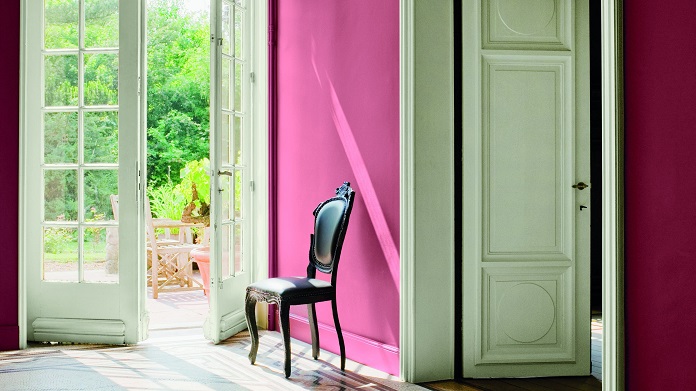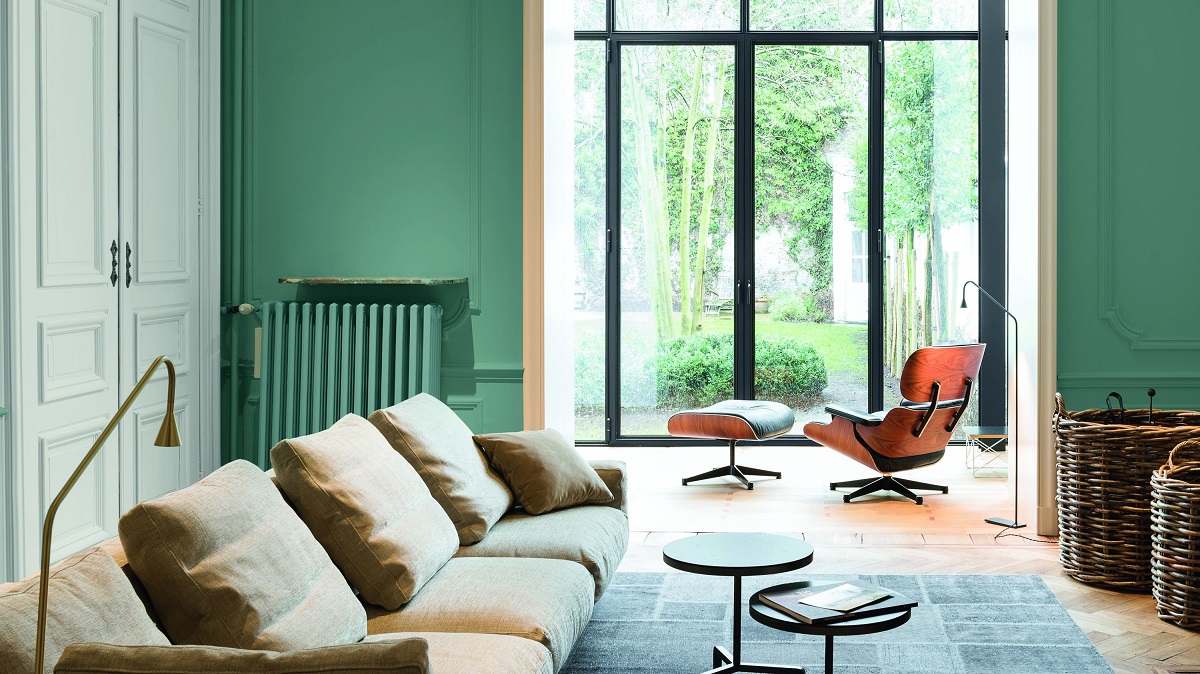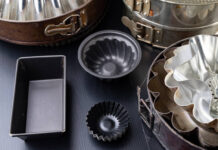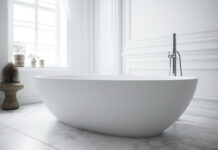A quick paint will do wonders to refresh the woodwork in your home. Here’s how to paint interior wood in your home:
How to paint interior wood
Oil-based paint
If white oil-based paint was used on your home’s woodwork in the past, it will have discoloured over the years – sometimes only in a matter of months, especially in rooms with little or no natural light.

Oil-based wood paints have other disadvantages, including smelling, drying slowly (especially when it’s cold), being prone to runs and drips (although non-drip versions are available) and being hard to clean up and clean off things. If it’s applied correctly, an oil-based wood paint can provide a good finish, but because it stays wet and tacky for a long time, the finish can easily be ruined by someone brushing against it, or insects getting stuck to it, for example.
Dulux Trade High Gloss in Pure Brilliant White, Amazon.
2. Water-based paint
White water-based wood paints don’t discolour or yellow and rarely drip, although they’re not as hardwearing as oil-based ones. They also dry quickly and although you have to do several coats of white, especially on bare wood or MDF, the paint becomes easier and quicker to apply the more coats you do, so you can finish the job in a day, which usually isn’t the case with oil-based. Other colours generally need just two or three coats, making them much less work than white water-based ones.
The problem with some water-based wood paints is that they dry so quickly it’s hard to get a good finish – if you go back over an area that’s already started to dry, the finish can be ruined. The best white water-based wood paint I’ve used is Dulux Trade Quick Dry Satinwood (Amazon). Although it can drip, it dries more slowly than most similar products, so it’s much easier to get a good finish. It’s a bit shinier than many satinwoods, but, more importantly, covers better and is more hardwearing – if you’re sceptical about water-based wood paints, try this one.

3. Water-based multi-surface paint
As well as specific wood/metal paints, you can get water-based multi-surface paints that can be used on walls, ceilings, wood and metal etc. These are ideal if you want different surfaces to match, as the same colour in a wood/metal paint and an emulsion (for walls) isn’t necessarily identical.
The One Paint Satin Finish Multi-Surface Paint, Amazon.
Prepare your surfaces
Wood paints were traditionally gloss, but these days lower-sheen satinwood and eggshell are more fashionable finishes. If you’re repainting gloss paint, it’s important to prepare it properly because paint doesn’t adhere well to glossy surfaces. This means sanding it to take off the gloss and then applying wood undercoat or wood primer/undercoat to give a matt finish ready for the new topcoat.
Dulux Professional Undercoat Paint For Wood And Metal, Amazon.
You may also be interested in…
This article may include affiliate links to products and services where we may receive a small fee to support the running of this site if you make a purchase or is a sponsored article from one of our select editorial partners providing valuable advice and information to our readers.



































































